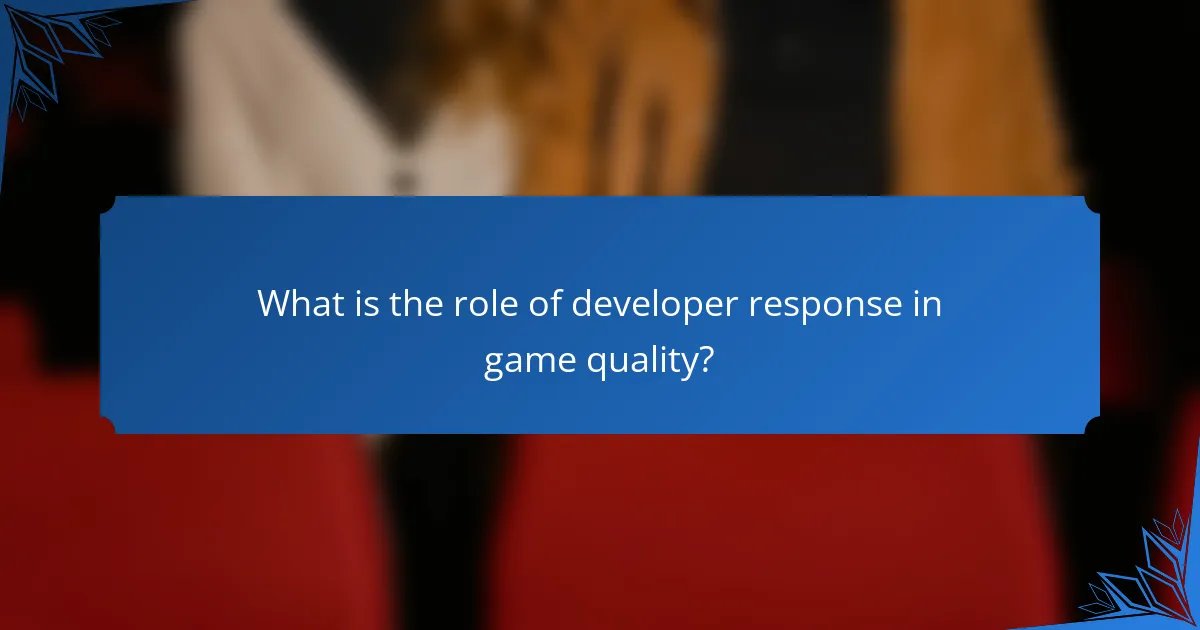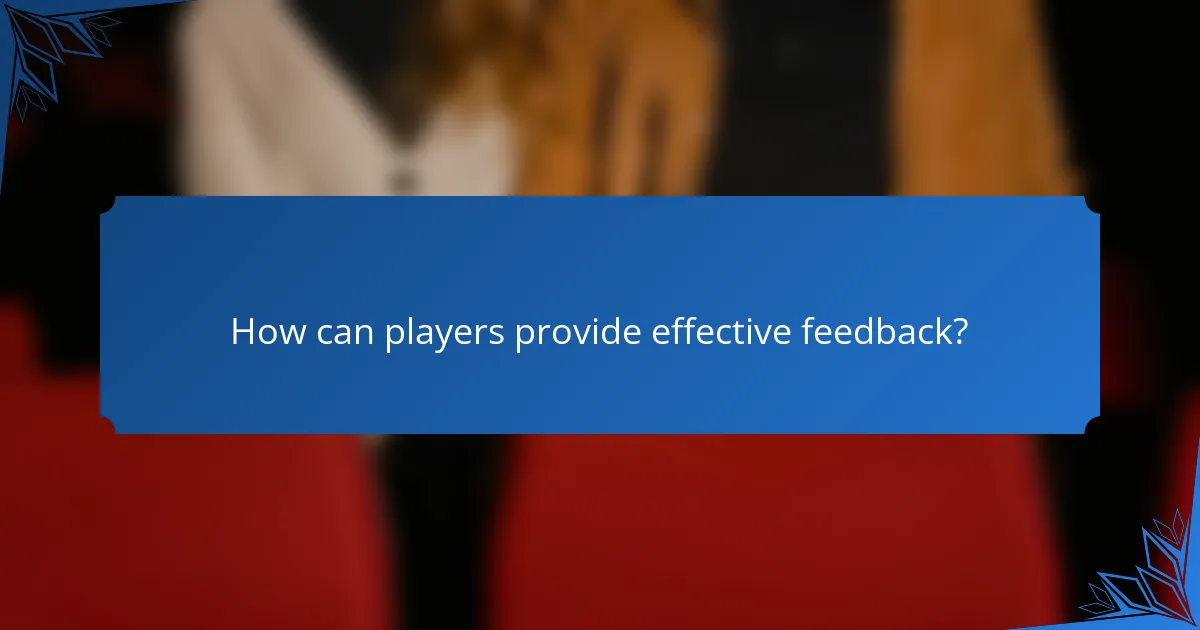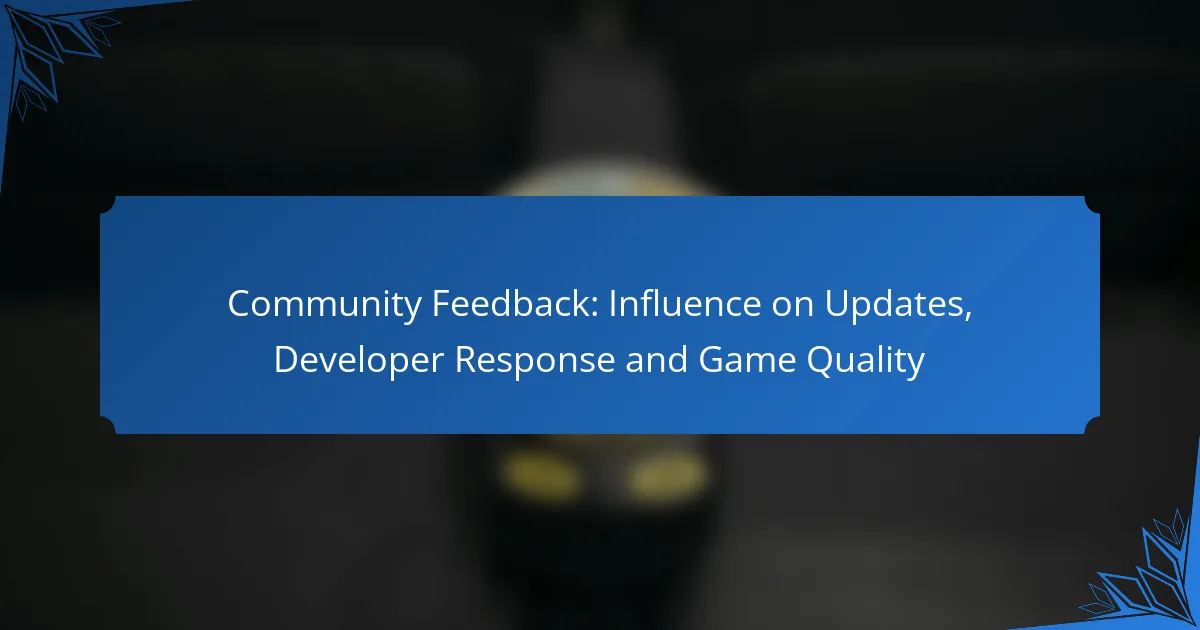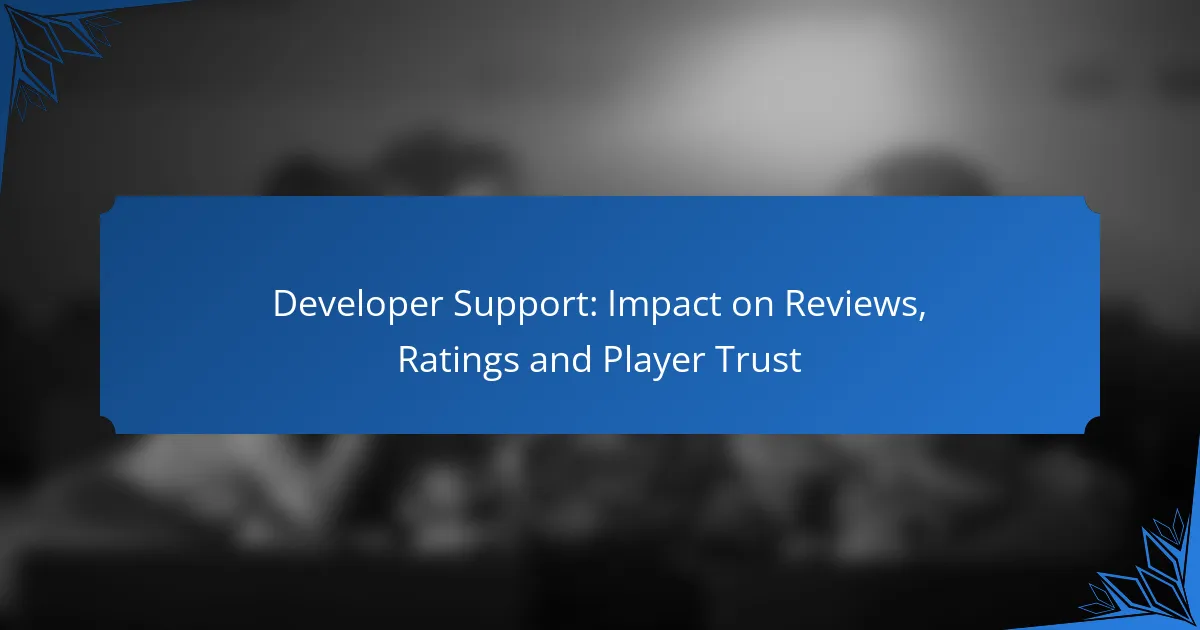Community feedback is a vital component in shaping game updates, as it informs developers about player preferences and concerns. By actively responding to this feedback, developers can enhance gameplay, address issues, and ultimately improve overall game quality, fostering a more engaged and satisfied player community.

How does community feedback influence game updates?
Community feedback significantly shapes game updates by guiding developers on player preferences and issues. This interaction helps ensure that updates align with player expectations, enhancing overall game quality and satisfaction.
Direct impact on patch notes
Patch notes often reflect community feedback by addressing specific concerns raised by players. Developers analyze player comments and suggestions to prioritize fixes and enhancements, ensuring that the most pressing issues are highlighted in updates.
For example, if players report bugs or request balance changes, these items are frequently included in the next patch notes, demonstrating a direct response to community input.
Changes in gameplay mechanics
Gameplay mechanics can be adjusted based on community feedback, leading to a more enjoyable experience. Players may express dissatisfaction with certain mechanics, prompting developers to tweak or overhaul them to better suit player preferences.
Such changes can include adjustments to character abilities, weapon performance, or game pacing, all aimed at improving player engagement and satisfaction.
Incorporation of player suggestions
Developers often incorporate player suggestions into game updates, creating a sense of ownership among the community. This can involve adding new features, improving existing ones, or even introducing entirely new content based on popular demand.
For instance, if a significant number of players request a specific game mode or feature, developers may prioritize its development to enhance player enjoyment and retention.
Examples from Fortnite updates
Fortnite is a prime example of a game that effectively utilizes community feedback. Updates frequently include changes based on player input, such as new weapons, map alterations, and balance adjustments.
For instance, following player feedback about weapon balance, Epic Games has made multiple adjustments to ensure a fair gameplay experience. These updates not only reflect community desires but also help maintain the game’s competitive integrity.

What is the role of developer response in game quality?
Developer response plays a crucial role in enhancing game quality by addressing player feedback and concerns promptly. Effective communication can lead to improvements in gameplay, bug fixes, and overall player satisfaction, fostering a positive community around the game.
Timeliness of developer replies
The speed at which developers respond to player feedback significantly impacts game quality. Quick replies can reassure players that their concerns are valued, while delays may lead to frustration and disengagement. Ideally, developers should aim to respond within a few days to maintain a strong connection with their community.
For instance, addressing critical bugs within 24 hours can prevent negative player experiences, while routine feedback can be acknowledged within a week. This responsiveness helps build trust and loyalty among players.
Transparency in communication
Transparency in communication involves openly sharing information about updates, changes, and the reasoning behind decisions. When developers explain their actions and the context of updates, players feel more included and understood, which can enhance their overall experience.
For example, if a game is undergoing significant changes, developers should provide detailed patch notes and insights into future plans. This openness can mitigate backlash and encourage constructive feedback, ultimately improving game quality.
Case studies from Riot Games
Riot Games exemplifies effective developer response through its commitment to player engagement. Their regular updates and community interactions demonstrate how timely and transparent communication can positively influence game quality.
In games like League of Legends, Riot frequently releases patch notes that not only detail changes but also explain the rationale behind them. This approach has fostered a loyal player base that feels heard and valued, leading to a more vibrant gaming community.

How can players provide effective feedback?
Players can provide effective feedback by clearly articulating their experiences and suggestions through various channels. This feedback should be constructive, specific, and focused on improving game quality and player experience.
Utilizing official forums
Official forums are a primary channel for players to share feedback directly with developers. Players should register on these platforms, post their thoughts, and engage in discussions to ensure their voices are heard. It’s beneficial to follow forum guidelines and be respectful to foster a positive environment.
When posting feedback, players should be specific about the issues they encounter, such as bugs or gameplay mechanics that could be improved. Including screenshots or detailed descriptions can enhance the clarity of their messages.
Engaging on social media platforms
Social media platforms like Twitter, Facebook, and Reddit allow players to reach a broader audience and developers alike. Players can tag official game accounts and use relevant hashtags to increase visibility. Engaging with posts from developers can also create opportunities for direct dialogue.
When using social media for feedback, brevity is key. Players should aim to communicate their points clearly and concisely, ideally in a few sentences. This approach helps ensure that their feedback is easily digestible and more likely to be acknowledged.
Participating in beta testing
Beta testing provides players with a chance to experience upcoming updates and features before they are released. This participation allows players to give direct feedback on new content, helping developers identify potential issues and areas for improvement.
Players interested in beta testing should keep an eye on official announcements for sign-up opportunities. Providing detailed feedback during this phase is crucial, as it can significantly influence the final product. Players should focus on both positive aspects and areas that need enhancement to give a balanced perspective.

What are the criteria for evaluating community feedback?
Evaluating community feedback involves assessing its relevance, frequency, and impact on player experience. These criteria help developers prioritize suggestions that can enhance game quality and player satisfaction.
Relevance to game mechanics
Relevance to game mechanics refers to how closely feedback aligns with the core systems and features of the game. Suggestions that directly affect gameplay, such as balance changes or new mechanics, are typically prioritized over general comments. For example, feedback on weapon performance in a shooter game is more relevant than opinions on the game’s art style.
When evaluating relevance, consider whether the feedback addresses specific mechanics or systems that players interact with regularly. This helps ensure that changes will resonate with the player base and enhance overall gameplay.
Frequency of similar suggestions
The frequency of similar suggestions indicates how many players share a particular concern or idea. High-frequency feedback often signals a widespread issue or a popular request, making it more likely to be addressed in updates. For instance, if numerous players request a specific feature, it suggests a strong demand that developers should consider.
To assess frequency, developers can track feedback through forums, surveys, or social media. Compiling this data helps identify trends and prioritize changes that will have the most significant impact on the community.
Impact on player experience
Impact on player experience measures how feedback can enhance or detract from the overall enjoyment of the game. Suggestions that significantly improve gameplay, reduce frustration, or enhance immersion are often prioritized. For example, fixing a bug that causes crashes has a high impact compared to minor cosmetic changes.
Developers should evaluate the potential benefits of implementing feedback against the resources required for changes. Prioritizing high-impact suggestions ensures that updates lead to meaningful improvements in player satisfaction and engagement.

How do updates affect game quality over time?
Updates can significantly enhance game quality by fixing bugs, introducing new features, and improving overall performance. Regular updates ensure that games remain engaging and relevant, addressing player feedback and adapting to changing expectations.
Long-term player retention
Frequent updates can lead to higher player retention by keeping the game fresh and exciting. Players are more likely to stay engaged when they see developers actively responding to feedback and making improvements. For instance, adding new content or seasonal events can maintain interest over time.
To maximize retention, developers should consider implementing a schedule for updates, such as monthly patches or quarterly expansions. This consistency helps players anticipate new content and encourages them to return regularly.
Balancing gameplay through patches
Patches play a crucial role in balancing gameplay by addressing issues such as overpowered characters or unbalanced mechanics. Developers can analyze player data and feedback to identify areas that need adjustment, ensuring a fair experience for all players.
For effective balancing, developers should prioritize transparency with their community. Sharing patch notes and explaining the rationale behind changes can foster trust and understanding among players. Additionally, monitoring player reactions post-update is essential to gauge the impact of adjustments and make further refinements as needed.



